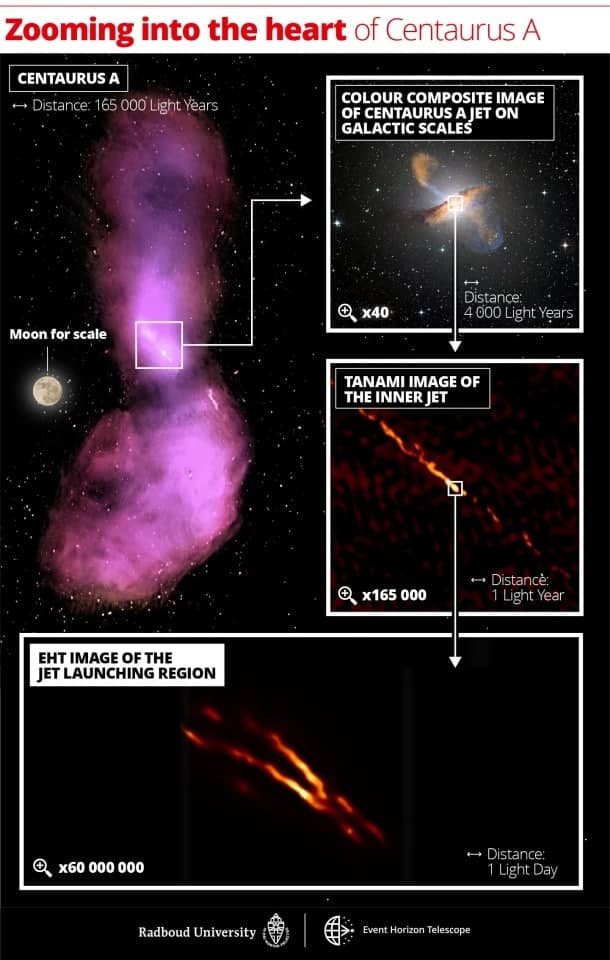For the first time, astronomers with the help of the Event Horizon Telescope (ETH) have captured a detailed view of plasma jets – released when matter from the galaxy falls toward its black hole and result in energy blast at the speed of light – emitted by a supermassive black hole at the center of the Centaurus A galaxy. The ETH has zoomed in with 16 times more resolution and ten times higher frequency to learn more about this strange phenomenon.
The Event Horizon Telescope (ETH) is the same telescope that gave us the first breathtaking image of the supermassive black hole located at the centre of the M87 (Messier 87) galaxy, in April 2019, followed by a recent high-resolution image showing spiraling lines of enigmatic magnetic powers, providing astronomers with a new perspective on how these celestial monsters behave.
As per the research paper published in the journal Nature Astronomy, the latest images – about 12 million light-years away – of the black hole – known for ejecting plasma jets that we detect on Earth – are from another galaxy Centaurus A – a galaxy that is the closest radio-loud source to Earth. Usually, we see jets at a larger scale, but the images of plasma jets were in less than a light-day scale.

Also, the high-resolution images match the general relativity concept proving Einstein’s theories to be correct. These theories were also confirmed by M87 in 2019, but until now, it was seen to be true for less massive blackholes, whereas Centaurus A has a mass of 55 million solar masses that is 55 million times the mass of our sun.
The Event Horizon Telescope was unable to image the shadow in the latest image, but they can see the origin of the jet if they peer down to 0.6 light-days. The new images also tell the termination of the plasma jet, as first author Michael Janssen explains particle acceleration acts at the outer edge of the jet and is the source for the ultra-high energy cosmic rays.
Though the images provide new insights into the Centaurus A galaxy jets, still there’s a lot to learn like what happens to the boundary of the plasma jet and black hole. At present, astronomers have sufficient data to dig their conclusions, but to resolve the mystery of the black hole this is not enough.

1 Comment
Pingback: NASA finds Black Hole giving birth to stars in a galaxy - Craffic